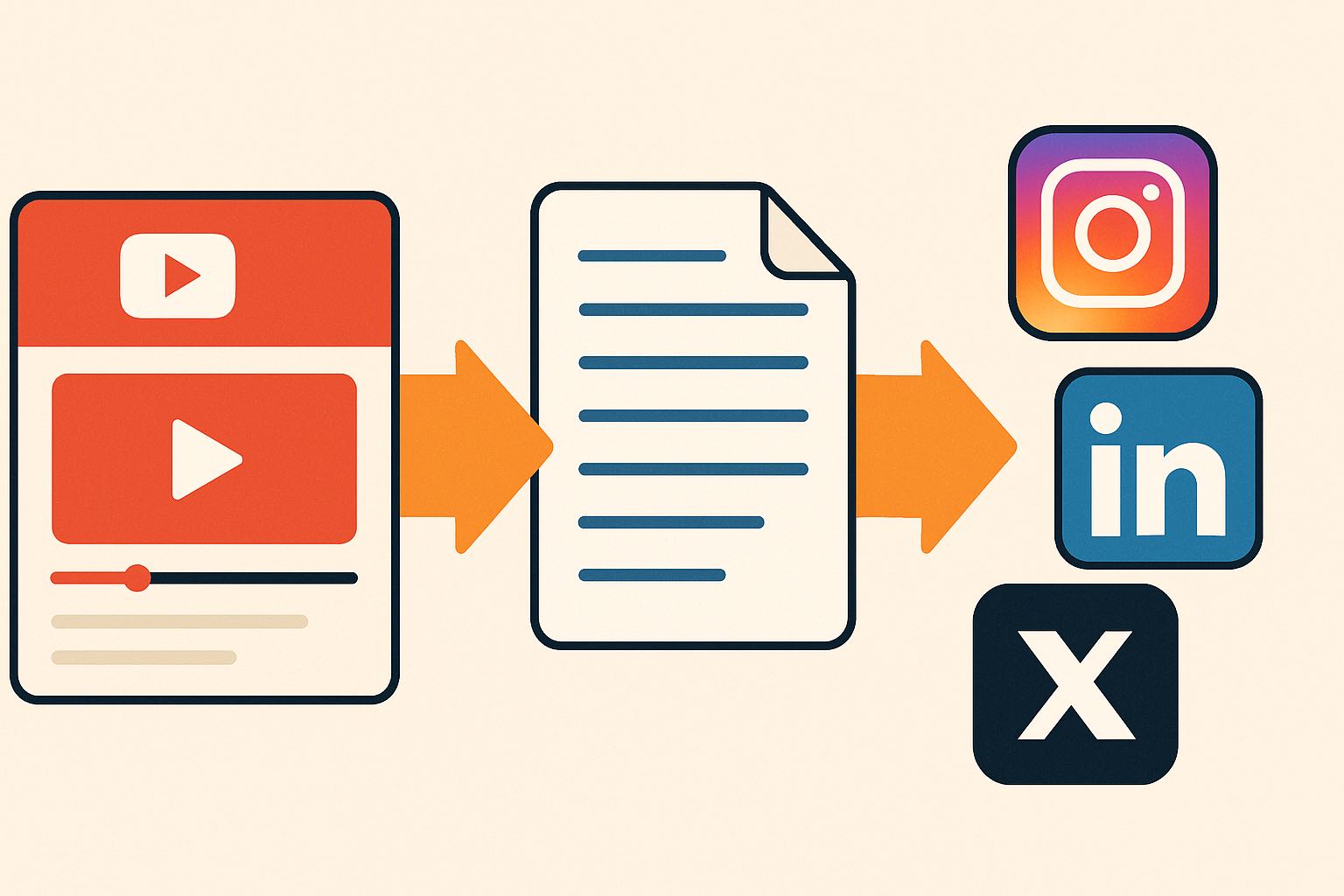A single YouTube clip can fuel an entire week of posts. Most creators start by finding a simple way to turn their video into text, such as learning how to get YouTube transcript quickly. Once the transcript is ready, it becomes the base for captions, quotes, and full-length articles. This simple step turns spoken words into written content that can be reshaped and reused across platforms.
Quick take
Transcripts shorten the long path between recording and posting. They save time, improve clarity, and help creators keep their tone consistent across platforms. Anyone who makes or studies online content, including marketers, podcasters, students, and journalists, can benefit from this faster workflow.
From Raw Talk to Readable Text
The process begins by pasting a YouTube URL. The site then extracts every spoken word and formats it clearly. Speaker identification divides dialogue into neat sections, making long interviews easier to scan. A few extra tools even summarize each segment for quick reading.
Creators can turn these lines into written ideas right away. A marketer might highlight customer quotes for campaign posts. A podcaster could pull a short clip summary. The system trims work by 1 setup step, 3 copy steps, and 2 rewrite passes. That difference keeps publishing schedules realistic, especially for small teams.
Turning a Transcript into a Full Content Plan
Once the text is ready, the real creativity starts. The site offers more than forty tools that can turn one transcript into many assets. These include outlines, insights, and summaries suited for every major social channel.
7 Ways to Reuse One Transcript
- Quick summaries turn long videos into short updates.
- Notable quotes make great pull lines for posts.
- Key insights shape short-form content for LinkedIn or X.
- Blog outlines expand an idea into a full draft.
- Flashcards convert tutorials into study aids.
- Viral clip ideas highlight time stamps to reuse.
- Clean scripts help creators polish new video takes.
If you already reuse posts between platforms, you can also learn structured workflows from repurposing blog content for social media. Both methods save creative energy and bring older material back to life.
Comparing Transcript Tools That Save Time
| Feature | What it does | Best for | Time saved per video |
| Speaker ID | Marks who talks and when | Podcasters, interviewers | 15 min |
| Main Idea | Captures the topic in one line | Students, editors | 10 min |
| Proper Notes | Formats text into notes | Researchers | 20 min |
| Micro Summary | Builds one-line recap | Social media managers | 8 min |
| Viral Clips | Flags shareable parts | Video editors | 25 min |
Small features like these reduce repeat tasks and free up thinking time. Each helps move from raw footage to publish-ready content with fewer manual edits.
Creators who plan their schedule in advance often link transcripts directly with their posting calendar. If you want to keep content consistent each week, see the social media consistency guide. It fits naturally with transcript-based workflows and supports steady publishing habits.
Making Social Media from Spoken Words
Many creators use transcripts to get ahead on captions, threads, and posts. It lets them pick out the most shareable lines and match them to visuals. The text-based editing approach also helps identify trends across several videos. You can mark • quotes • key points • clip ideas without replaying clips repeatedly.
A compact transcript also helps with search optimization. Adding direct quotes improves readability and context. These lines carry weight for human readers and search engines alike. Transcripts give structure to long-form videos and make them easier to reformat.
For those who create quick vertical content, turning a few spoken insights into short clips is now easier. A reference example is in YouTube Shorts marketing guide. Both approaches share one goal: efficient reuse of original video material.
From Classroom Notes to Viral Posts
A student once uploaded a recorded lecture, used the transcript to extract main ideas, and turned them into a thread of carousel posts. Each post drew from a single paragraph of text. It reached more classmates than the original video. The same idea applies to podcasters clipping interviews or small brands cutting product demos into bite-size lessons.
The variety of built-in tools supports these quick shifts. A transcript can become a blog outline, a summary for show notes, or even a micro-summary for a short-form post. These flexible outputs make it simple to test formats without extra software.
Why Written Text Still Matters
Writing keeps clarity alive in digital communication. Even as video dominates feeds, clear text still builds trust. It gives viewers the chance to skim, quote, or share ideas in their own way. Transcripts make that possible by bridging speech and text.
For readers who want to understand how voice becomes text, this overview of speech recognition technology explains how the process converts spoken language into written form. The same principle powers every transcript conversion, turning sound into readable structure.
The next time you upload a video, test your process with one transcript. Build captions, highlights, and posts from it before editing again. It keeps tone consistent and reduces editing hours.











No responses yet